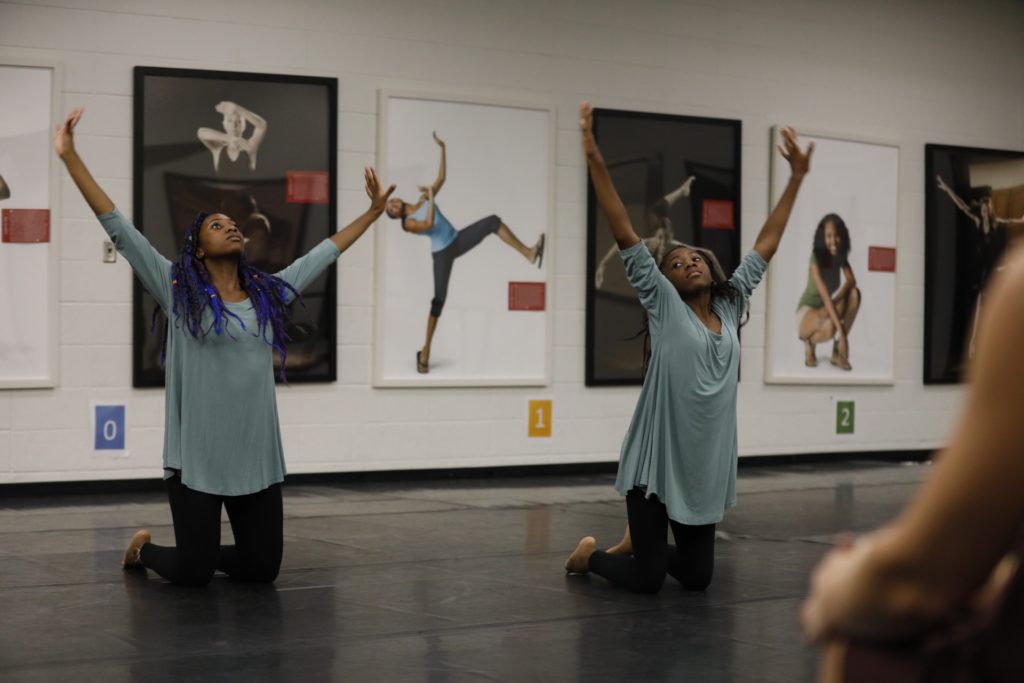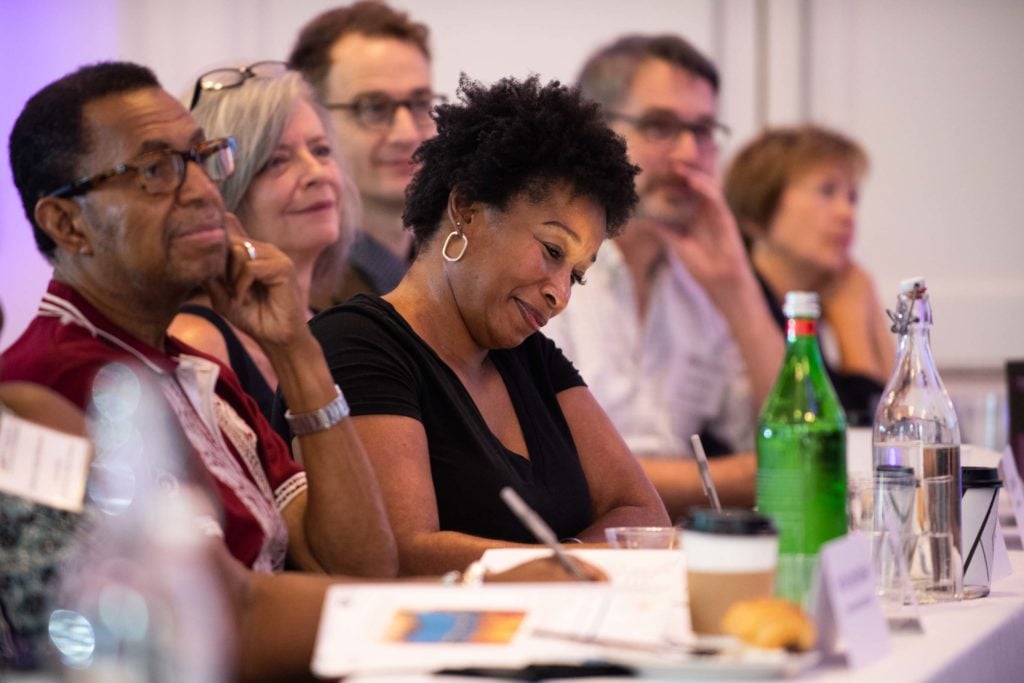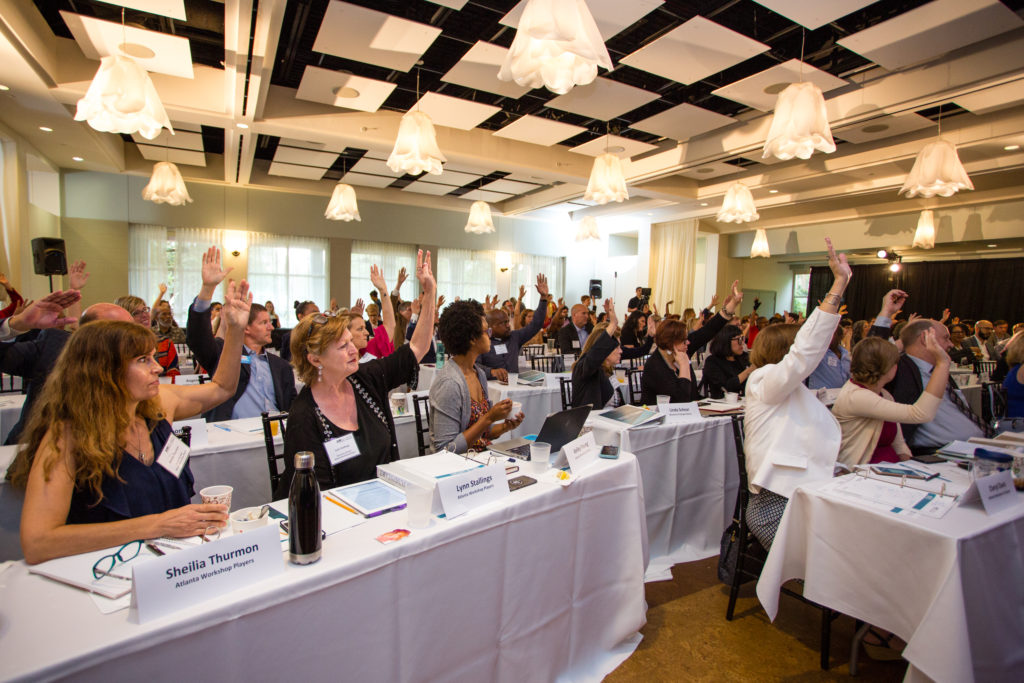Bloomberg Philanthropies Devos Institute for Arts Management Flux Factory
Practically everyone in the art world understands the importance of small and midsize galleries to the arts ecosystem. This wide recognition explains why we're now seeing more and more than actions beingness taken to shore up these key players. Less discussed is the importance of small and midsize arts nonprofits to the same ecosystem—and beyond.
Simply at least one item patron has taken a smashing interest in the health of this accomplice. Since 2011, billionaire and old New York City mayor Michael Bloomberg has been quietly funneling a considerable portion of his fortune into helping pocket-size and midsize arts nonprofits flourish in cities across the US, through what's now known as the Arts Innovation and Management (AIM) program.
Administrated as a branch of Bloomberg Philanthropies' American Cities initiative, AIM grew from Bloomberg's belief that minor and midsize cultural organizations have been vastly under-appreciated in terms of their impact on metropolitan communities and economies. The plan's expansion in 2018 has welcomed more than than 200 new grantee organizations, which take been collectively promised over $43 million. The terminal 49 recipients, all in Baltimore and Denver, were announced just last month. To engagement, more than than 500 arts nonprofits take entered the program during its 7-year life, with Bloomberg Philanthropies' investment then far totaling more than than $108 meg.
Two conjoined benefits make the program especially unique in today's arts mural. First, AIM provides recipients ii years of unrestricted operating funding, usually comprising most ten percent of each system's annual operating expenses. Second, AIM welcomes recipients into a robust arts-management training program designed to elevate their skillsets on nonprofit essentials ranging from marketing and fundraising to long-term planning and board development.

A performance at Moving in the Spirit, which received a Bloomberg Philanthropies AIM grant in August 2018. Photo courtesy of Bloomberg Philanthropies.
Small but Mighty
The point is to aid small and midsize organizations get more robust, more than efficient, and more resilient—but not necessarily bigger, according to Kate D. Levin, who oversees Bloomberg Philanthropies' Arts Programme. "AIM isn't near putting organizations on a growth trajectory," she says. "You can do some things at scale that are swell and necessary. Simply a smaller size can be much more constructive."
In Bloomberg Philanthropies' system, that smaller size is defined by finances. Only organizations in being for at to the lowest degree ii years with annual operating budgets between $150,000 and $3.v million are eligible for the plan. But within that budget band, AIM grantees span the total spectrum of creative disciplines: visual art, dance, literature, music, film, and theater.
As Levin explains, there are "far more" similarities than differences between organizations within this cohort, most of which "started out as an act of charisma" rather than the product of a carefully planned, long-term strategy. "Size doesn't dictate longevity, the same way it doesn't dictate value. What it does dictate is that you're usually pretty visionary, and yous're likely able to take risks of a certain kind at that scale."

Grantees take notes at a Bloomberg Philanthropies AIM seminar in Pittsburgh. Photo courtesy of Bloomberg Philanthropies.
This theme explains the reason for AIM's intensive management training programme. Throughout the two-yr grant period, the senior executive and one board member of each grantee must attend every one of a set of periodic seminars jointly developed by Bloomberg Philanthropies and other vanguards in the field, led by the DeVos Constitute of Arts Direction at the University of Maryland (which was endowed through funding from President Trump'southward instruction secretary Betsy DeVos and her married man). The curricula are designed to dial in specifically on arts management, non just general management, since this particular sector has enough unique characteristics to make it a special case.
As a way to further tailor the seminar teachings, the AIM program pairs each recipient organization with a mentor who provides monthly phone consultations with leadership and board members. Devon Akmon, who received an AIM grant in 2015 every bit managing director of Detroit's Arab American National Museum before joining the DeVos Institute as a consultant this May, foregrounded the importance of these calls in helping recipients empathise how to tailor the all-time practices to their particular state of affairs. "Nosotros accept a particular curriculum, but we realize that it manifests in different ways depending on the organization," he says. "Whether you lot're a museum or a theater program, a small organization or a midsize system, it's ever going to exist a little different."
Zenetta S. Drew, executive managing director of the Dallas Black Dance Theater (another AIM recipient), highlighted the ongoing advisory relationship as "the biggest game changer with the AIM grant." She said of their mentor, Michael Kaiser, "His caliber of experience and feedback was instrumental to some of the decisions we made during this critical fourth dimension and was above and across the level of engagement with most funders."

A performance at the Lauren Deutsch Jazz Establish of Chicago, a past recipient of Bloomberg Philanthropies' AIM grant. Photo courtesy of Bloomberg Philanthropies.
Search and Deploy
The seminar locations hopscotch among the dissimilar American cities where grantees are based. Piloted in New York 7 years ago as the Arts Advocacy Initiative, AIM went national in 2015 by expanding to Boston, Chicago, Dallas, Detroit, Los Angeles, and San Francisco. In the years since, the program has welcomed participants from seven midsize American cities: Atlanta, Austin, Baltimore, Denver, New Orleans, Pittsburgh, and Washington, D.C.
The search process for AIM recipients is two-pronged, co-ordinate to Levin. Sometimes Bloomberg Philanthropies will get interested in a detail city outset, then explore whether it is home to multiple arts nonprofits fitting the contour. Other times, detail nonprofits can draw Bloomberg Philanthropies' attention toward a detail city. Either manner, once the system identifies a cluster of potentially worthy grantees, information technology invites each i to use for the AIM program.
Levin says that the application is mainly a means of confirming that the invitees land inside the right budget band, and that the grooming regimen is germane to their challenges and goals. "Our assumption is that, unless we messed upwardly, any organization that does employ will be accepted," she says. Notwithstanding, some invited organizations decline, and Bloomberg Philanthropies respects that conclusion. "Nosotros very much recognize that this isn't for everybody," explains Levin. "We accept no interest in this program being seen as the determinant of excellence."
Just in either example, finding intra-city clusters of grantees is a crucial component of AIM. Bloomberg Philanthropies hopes that the program volition create a network effect among grantees who share a locale, allowing them to strengthen customs ties and, as Akmon puts it, "call up together nearly things" instead of trying to trouble-solve strictly with their advisors. He describes this benefit equally a "natural byproduct" of AIM's structure, and he is non alone in identifying it equally an unexpected nugget. Linda Lucero, the executive and artistic director of AIM grantee the Yerba Buena Gardens Festival, says she "appreciated the opportunity to gather with other middle-sized nonprofits on a regular basis. I knew many but met many more—staff, lath members, artists—all in one place." In the process, what might have been a set of competitive relationships transforms into collegiality.

Grantees at a Bloomberg Philanthropies AIM seminar in Atlanta. Photo courtesy of Bloomberg Philanthropies.
A Ii-Way Street
Along with these benefits come sure responsibilities. All AIM organizations are required to match 20 percent of their annual grant funding, besides as convince 100 percentage of their lath members to contribute financially, either by giving themselves or securing boosted outside donations. They also must provide ongoing information to SMU DataArts, a standalone enquiry entity and database for facts and figures on American arts, cultural, and humanities organizations. (Previously known as the Cultural Information Project, DataArts was founded in 2004 past Pew Charitable Trusts and other Philadelphia-based foundations. Bloomberg Philanthropies has supported the organization since 2008.)
Through data, Levin says, "We can pinpoint ways that these organizations are materially able to manage better." SMU DataArts intakes data on elements such every bit cultural organizations' upkeep size, board participation, and lead fourth dimension for strategic planning on dissimilar initiatives. Levin emphasizes that these are "not just data points for the sake of having a number." Instead, Bloomberg Philanthropies asks AIM grantees to focus on metrics that accept been demonstrated to influence outcomes. Longer planning windows, for instance, consistently prove to have a positive result on marketing.
Bloomberg Philanthropies contends that these data-driven, training-honed advancements will do good more than than just the arts scene in each urban center. People "aren't always attuned to the fact that cultural organizations are really dynamic business enterprises," Levin says, with an "incredibly productive history of community edifice and talent development." Their activity can be crucial to overcoming local challenges and inspiring citizens in a way that helps seed success for other enterprises.
In this sense, Bloomberg Philanthropies views AIM as a meaningful investment in the long-term health of the cities themselves, carried out through the arts sector—and given Michael Bloomberg's famous penchant for data-based decision-making, rest bodacious he has numbers to dorsum this up. And then while his philanthropic team will continue to evaluate AIM for at to the lowest degree the next ii years, co-ordinate to Levin, their commitment to pocket-size and midsize arts organizations volition continue full speed ahead.
"We're not trying to say one office of the cultural ecology is more valuable than the others. Nosotros're proverb this is a sector that has been undervalued and overlooked."
Follow Artnet News on Facebook:
Desire to stay ahead of the fine art world? Subscribe to our newsletter to go the breaking news, middle-opening interviews, and incisive disquisitional takes that drive the conversation forward.
jeffersonwhingent.blogspot.com
Source: https://news.artnet.com/art-world/bloomberg-arts-innovation-management-program-1371808
0 Response to "Bloomberg Philanthropies Devos Institute for Arts Management Flux Factory"
Postar um comentário